Naturalists
Naturalists
More than just nature guides, our naturalists are engaging storytellers, each with their own rich experiences and fascinating tales from the field. They are as different as their specialties—which range from geology to zoology—and their knowledge about the natural world runs wide and deep. And while they are schooled in science, they have a knack for describing species and natural phenomena in relatable ways, whether explaining the behavior of a brown bear to an elementary school student or describing the physics of glacier formation to a Ph.D. holder. They know their destination inside and out and, often, they call it home.
Our naturalists are also inspiring travel companions who participate fully in the expedition, leading excursions and also joining guests at meals or in the lounge over drinks. Each team is made of naturalists with a range of specialties, so you can set out with a botanist on a morning hike and then take an afternoon Zodiac ride with a marine biologist. Or if a naturalist shares a particular passion of yours—say birding or geology—you can choose to join the excursions they lead. Our guests have been known to book another trip just to travel with a particular naturalist again.
More than just nature guides, our naturalists are engaging storytellers, each with their own rich experiences and fascinating tales from the field. They are as different as their specialties—which range from geology to zoology—and their knowledge about the natural world runs wide and deep. And while they are schooled in science, they have a knack for describing species and natural phenomena in relatable ways, whether explaining the behavior of a brown bear to an elementary school student or describing the physics of glacier formation to a Ph.D. holder. They know their destination inside and out and, often, they call it home....
Read more
Meet our Naturalists
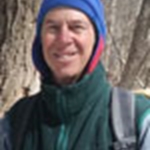
Daniel Baldwin
An educator at heart, Dan finds great joy in helping others explore and connect with the world around them. He has taught marine sciences in the Florida Keys and on Catalina Island, science and math in international schools in Mexico, Costa Rica, and the South Pacific, and swimming and water safety in Alaska. Dan grew up in Pennsylvania and attended Penn State where he earned a degree in science education. He has always sought out fulfilling work, in beautiful locations, surrounded by wonderful people. Connection with the environment has been a constant theme in his work and travels. At present, Dan has returned to his roots in Central Pennsylvania where he and his wife have settled and spend their time in the great outdoors. While on board with Lindblad-National Geographic he can be found engaging folks in the natural world; and is always on the lookout to provide enlightenment for naysayers of the green flash.
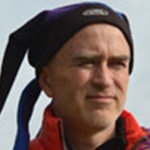
Timothy Martin
Tim Martin has been teaching Geology, Astronomy, Art and Earth Science for over 20 years. Although he grew up in several locations around the United States, he always felt most at home in the natural world. His persistent curiosity led to his undergraduate study of the natural sciences and art, and his love of teaching led to graduate work in Geoscience Education. Beyond classroom study, he has worked with an international Climate and Geologic research expedition in Siberia, he and colleagues flew an experiment on NASA’s zero-gravity research plane, studied volcanoes in Hawaii, and in 2016 Tim was selected as a National Geographic and Lindblad Expeditions Grosvenor Teacher fellow. Tim has taught Art in addition to the science classes. Helping students explore their creative side through photography along with learning the technical aspects of working with and firing clay has been a wonderful extension to his scientific and aesthetic pursuits. In his free time, Tim is an active artist, and he enjoys all sorts of outdoor activities with his family. Frequently on weekends you may find him “up close and personal” with Earth Science while hiking and rock climbing.
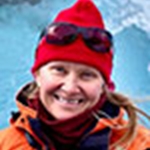
Eva Westerholm
Eva is an animal loving outdoor enthusiast who has guided in the polar regions and many of the countries in between for over 15 years. She grew up on the west coast of Sweden and travelled extensively with her family throughout Europe. Eva credits this early exposure to new cultures as an inspiration to keep exploring and has not slowed down since. Looking for an adventure of her own, she took a job as mess girl on a small vessel in the Arctic Archipelago of Svalbard under the midnight sun. Eva fell in love with the sea and has not stopped sailing since and now has worked nearly every role possible on expedition ships. Not only is Eva an avid birder and a keen naturalist, but she is also very interested in human history and the stories people and places tell. Wanting to learn more she studied at the University of Gothenburg and University of Sydney Australia where she has earned a degree in Social Anthropology. Eva loves sharing her knowledge and experiences, but she values what she learns from her fellow travelers, guests, and colleagues, even more. Currently Eva lives in the beautiful San Juan mountains of Colorado where she enjoys skiing, hiking, and biking. Her work and travelling lifestyle do not allow for a pet at home, so the closest thing to it is a sourdough starter that she has managed to keep alive for over 8 years.
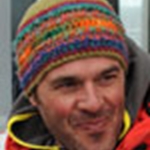
Santiago Imberti
An ornithologist, photographer, fisherman, climber, and writer, Santiago Imberti was born and raised in southern Patagonia, Argentina. He obtained a degree in tourism and later in ornithology, which allowed him to combine his love for nature and the outdoors with his work as a birdwatcher, naturalist, fly fishing, and mountain guide. He has been guiding trips in Patagonia, the Antarctic, and Arctic for some 25 years. However, his main passion is conservation and research therefore off the ships Santiago does field work on birds, mostly in southern Patagonia and is the President of Asociación Ambiente Sur; an NGO that seeks to protect the environment and educate the new generations on a sustainable way of life in southern Patagonia. From 2009 to 2014 he has coordinated the project to save the now critically endangered Hooded Grebe, which is an endemic bird in Patagonia; and the creation of Patagonia National Park, a massive protected area that aims to save the grebe and some of the least know habitats in South America. His many articles and stories have been published in scientific journals, popular travel magazines, books, and since his singing abilities are rather poor, he has produced a couple CDs of the beautiful bird sounds of South America, Patagonia, and Antarctica. He lives in Punta Arenas, southern Patagonia, Chile, with his wife and son.
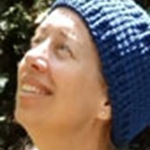
Kimberly Baldwin
Family vacations to the Jersey shore engendered a deep love affair between the ocean and Kimberly Baldwin. But growing up in Pennsylvania proved challenging for a hopeful marine biologist. College afforded the opportunity to earn a B.S. in Marine Biology, work for a marine consortium in Virginia, and marine institutes in the Florida Keys and Catalina Island, California. This was followed by a master’s degree in education while stationed in Mallorca, Spain. Other employment was equally colorful. Early on, Kimberly worked for a summer in Denali National Park washing buses and backpacking 3 nights a week in the tundra and forests. She guided guests on bird and whale trips in Puerto Vallarta, Mexico and taught fourth graders in American Samoa. For the past 15 years Kimberly instructed science courses at a private high school in Costa Rica; teaching: A.P. environmental science, physics, chemistry and leading marine biology students on worm digs, conchology studies, tidal pool explorations and snorkel trips. There are a few more marine biology students in college these days thanks to her classes. She is now with you and ready to share her knowledge of the briny environment. Kimberly believes that a person only wants to protect what they care about and can only care about something if they understand it. This has been her philosophy for the hundreds of people she has had the pleasure and honor to guide or teach over the years. Kim is married to Lindblad National Geographic Naturalist Daniel Baldwin, they currently call Huntingdon, Pennsylvania home.
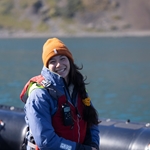
Natalie Long
With a passion for creating positive change, Natalie's newfound focus is on how science can be reflected in governance and policy to enhance the restoration and protection of nature and wildlife. Born on the Northern Beaches of Sydney, Australia, Natalie grew up exploring the extraordinary Australian environment. Natalie's admiration for nature and wildlife evolved while she travelled across seven continents photographing and filming wildlife. During her travels, she spent time assisting wildlife rehabilitation projects with pandas, sloths, Asian elephants, African penguins, capuchin monkeys and a range of birds. Between her travels, she obtained her first degree in Environmental Law and Environmental science. Since then, Natalie has worked in communications roles with conservation organizations Orangutan Alliance and WWF-Australia with a focus on the restoration and protection of habitats and endangered species in Indonesia and Australia. In 2021, Natalie moved to Tasmania, Australia where she completed a master's degree in Marine and Antarctic Science. During her masters, she researched the future of Adalie penguins under climate change and how the management approach in Antarctica impacts the penguins' future. Natalie continues to explore the world, finding opportunities to spread happiness and curiosity through special moments that connect people and nature.
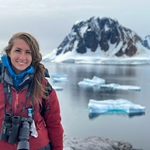
Julia Huggins
Julia is an earth-systems scientist who studies how the interactions between living and non-living parts of Earth’s environments can shape ecosystems and global climate. She is based in Squamish, BC, Canada, and through her research collaborations she also works at research laboratories in Europe and spends time on open-ocean scientific research vessels around the world. Julia’s passion for environmental science and education started at a young age when she grew up exploring the mountains of Wyoming and the seacoast of New England. Julia studied biology at Lewis & Clark College in Portland, OR, and spent several years researching how symbiotic relationships between trees, mushrooms, and soil microbes drive ecosystem-level processes. This work brought her to remote corners of the world, including New Zealand, Patagonia, and Alaska. Julia completed her Ph.D. at the University of British Columbia in Vancouver, BC, Canada, where she studied how chemical processes carried out by tiny microorganisms regulate the health of marine environments. For this research, Julia organized oceanography trips in British Columbia and month-long research expeditions in the Pacific Ocean off the coasts of Mexico and Chile. Throughout her research career, Julia has combined her love of the outdoors with her work as a science educator. Julia has worked as a naturalist and backcountry guide for more than 10 years throughout the Pacific Northwest. She is also a co-founder of the BOAT non-profit that supports access to outdoor education, and she helps make science fun and engaging as a co-host of the Nerdy About Nature podcast. She believes deeply in the power of fun, accessible, place-based education; sharing the things that inspire her about the natural world is the root of her motivation for research and science outreach.

Kylee Walterman
Kylee Walterman grew up in central California where she was in close proximity to the ocean, mountains, deserts, valleys, and national forests; this is where she found a passion for the natural world. She attained a Marine Science degree with a biology minor from CSU Monterey Bay and during that time, developed her love of outdoor activities like hiking, kayaking, paddle boarding, diving, sailing, and photography. Kylee has done internships working in close contact with big cat species and in local rehabilitation centers, where she fell in love with birds of prey. Most recently she has been a naturalist and captain out of Monterey Bay running whale watching excursions where she’s conducted field interpretation during some incredible wildlife activity including orca predation events and mass migrations. She also has spent time traveling the PNW, B.C, Alaska, the Channel Islands and has studied in South Africa. Kylee has taken up an interest in connecting people to beautiful experiences and igniting the spirit of conservation. She takes every trip as a true adventure and believes the best part of an expedition is the unknown.
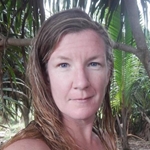
Karson Winslow
Karson has been working on the water for the last 15 years. A San Francisco native, she holds a 100-ton USCG captains license and PADI Divemaster. Karson attended UC Santa Cruz and received a bachelor's degree in Anthropology, focusing on Archaeology. She followed up her degree with Archaeological Field School training from Cabrillo College. After college, Karson spent a summer as a Natural History interpreter intern for the Friends of the Eagle River Nature Center, a non-profit partnering with the Chugach State Park in Alaska. Karson combined her passion for the ocean and fascination for material culture and continued her studies to acquire a degree in Maritime Archaeology from Flinders University in South Australia. Karson worked as a field archaeologist in areas like the US Virgin Islands of the Caribbean, the high desert of Northern California and St Augustine, Florida, the oldest European port in the United States. She has worked as a shipwreck monitor, diver and has published her work in Archaeological journals. The ocean has taken her to some of the most beautiful places on the planet. She has been fortunate to participate in a wide variety of Maritime activities and visit corners of the globe. Some of her favorites have been Cetacean Surveys off the Mariana Trench, racing in Bermuda for the 2017 America's Cup, circumnavigating the globe over 16 months with the World Are, exploring Tanna and the volcano in Vanuatu, swimming with hammerheads in Hawaii, and hiking the Iditarod National Historic Trail outside of Eagle River, Alaska. Karson now calls Kona, Hawaii home where she is also a volunteer for the Ke Kai Ola Marine Mammal Center and participates in outreach and protection for the endangered Hawaiian Monk Seals. An avid sailor, Karson and her partner have a Valiant 40 sailboat that they keep in French Polynesia.
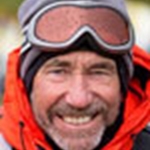
John Pailthorpe
John spent the early years of his life in London, before an inspirational teacher took him to the highlands of Scotland on a school adventure trip. From then on the natural world has been his passion. After teacher training in Bangor, North Wales, John began a thirty-year career in outdoor education centres and schools, teaching and leading children and adults in such pursuits as mountaineering, rock climbing, kayaking, and sailing throughout the U.K. and Europe. During this time John took time out to be part of six polar scientific expeditions, as a field assistant/guide. Two of these were with the British Antarctic Survey; the first a two-month field expedition to the Eklund Islands on the Antarctic Peninsula; the second, eight months as part of a king penguin and elephant seal study on South Georgia. He served as a boat skipper/field guide on a geological expedition to the northwest of Svalbard. More recently, he took part in three expeditions to the Greenland ice cap for the Scott Polar Research Institute of Cambridge, as part of the European Space Agency's “Cryosat” project. John is well aware that his career, and the wonderful experiences it has included, all began with one special teacher. With this in mind, he likes nothing more than to pass on his enthusiasm for nature and all things outdoors, with the intention of promoting an awareness and caring attitude towards the natural environment.
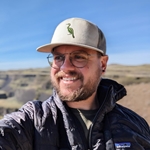
Kyle Bowman
Kyle was born and raised in North Carolina and now lives, year-round, in the mountains of Alaska. As a child he became enamored with birds and wildlife while camping or hiking with his family. He attended the University of North Carolina and spent time between semesters volunteering with AmeriCorps leading trail building projects in National Parks. Kyle has also spent many summers as a river guide in Tennessee, Georgia, Wyoming, and Alaska, becoming proficient at navigating white water and scenic rivers. He’s earned certifications in Swift Water Rescue, Wilderness First Responder, and Orienteering. He has also completed three self-guided rafting trips down the Grand Canyon, totaling 840 miles of river. Once Kyle moved to Seward, Alaska, he found a true passion for sharing the wonders of the natural world with people visiting the state. He works as a boat captain, leading guided tours into Kenai Fjords National Parks to find marine wildlife, tidewater glaciers, as well as rare birds! He has spent many years in the Expedition cruise industry with Lindblad, exploring Alaska, Costa Rica, Panama, and Mexico and is eager to explore new areas. When he isn’t exploring aboard, he spends his spare time backpacking, white water kayaking, hiking glaciers, birding, and cooking.
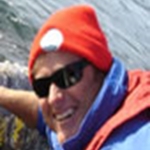
Timothy Hatler
Originally from the SF Bay Area, Tim Hatler grew up in a sailing family – son of the owner of a Sailboat Dealership in Redwood City, California. Tim graduated with a BS in Chemical Engineering at UC Santa Barbara but soon followed his heart back to the water and boats. Tim worked on Dive Vessels in San Diego area to obtain his Captains License and then used it to captain dive boats for the Catalina Island Marine Institute. He then founded a Tall Ship Program for the same company on a 156 foot 3 masted topsail schooner named Tole Mour, and spent 9 years running it, starting as program director and ending up Captain/Director for the nonprofit educational program. Tim then moved ashore to Baja to build and run Palapas Ventana, an Ocean Adventure resort in southern Baja where for the last 18 years he has been offering Ed- Ventures to their guests in a 13 bungalow facility with 6 boats in a small coastal town on the Sea of Cortez and now expanding operations in Mag Bay. Tim loves SCUBA, Freediving, Surfing, Sailing, Kitesurfing, Spearfishing, Fishing and exploring Baja´s nooks and crannies in search of adventure. Tim is married to Jimena a La Paz local with an oceanography degree and they have a son Tanner who loves the water!
Showing 12 of 59

